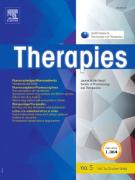Pharmacokinetics and pharmacodynamics of hydroxychloroquine in hospitalized patients with COVID-19 - 30/07/21
 , Saik Urien b, 1, Benoit Llopis a, Valérie Pourcher c, Olivier Paccoud c, Alexandre Bleibtreu c, Julien Mayaux d, Estelle Gandjbakhch e, Guillaume Hekimian f, Alain Combes f, Olivier Benveniste g, David Saadoun g, Yves Allenbach g, Bruno Pinna a, Patrice Cacoub g, Christian Funck-Brentano a, Joe-Elie Salem a
, Saik Urien b, 1, Benoit Llopis a, Valérie Pourcher c, Olivier Paccoud c, Alexandre Bleibtreu c, Julien Mayaux d, Estelle Gandjbakhch e, Guillaume Hekimian f, Alain Combes f, Olivier Benveniste g, David Saadoun g, Yves Allenbach g, Bruno Pinna a, Patrice Cacoub g, Christian Funck-Brentano a, Joe-Elie Salem aSummary |
Background |
Hydroxychloroquine (HCQ) dosage required to reach circulating levels that inhibit SARS-Cov-2 are extrapolated from pharmacokinetic data in non-COVID-19 patients.
Methods |
We performed a population-pharmacokinetic analysis from 104 consecutive COVID-19 hospitalized patients (31 in intensive care units, 73 in medical wards, n=149 samples). Plasma HCQ concentration were measured using high performance liquid chromatography with fluorometric detection. Modelling used Monolix-2019R2.
Results |
HCQ doses ranged from 200 to 800mg/day administered for 1 to 11days and median HCQ plasma concentration was 151ng/mL. Among the tested covariates, only bodyweight influenced elimination oral clearance (CL) and apparent volume of distribution (Vd). CL/F (F for unknown bioavailability) and Vd/F (relative standard-error, %) estimates were 45.9L/h (21.2) and 6690L (16.1). The derived elimination half-life (t1/2) was 102h. These parameters in COVID-19 differed from those reported in patients with lupus, where CL/F, Vd/F and t1/2 are reported to be 68L/h, 2440 L and 19.5h, respectively. Within 72h of HCQ initiation, only 16/104 (15.4%) COVID-19 patients had HCQ plasma levels above the in vitro half maximal effective concentration of HCQ against SARS-CoV-2 (240ng/mL). HCQ did not influence inflammation status (assessed by C-reactive protein) or SARS-CoV-2 viral clearance (assessed by real-time reverse transcription-PCR nasopharyngeal swabs).
Conclusion |
The interindividual variability of HCQ pharmacokinetic parameters in severe COVID-19 patients was important and differed from that previously reported in non-COVID-19 patients. Loading doses of 1600mg HCQ followed by 600mg daily doses are needed to reach concentrations relevant to SARS-CoV-2 inhibition within 72hours in≥60% (95% confidence interval: 49.5–69.0%) of COVID-19 patients.
El texto completo de este artículo está disponible en PDF.Keywords : Hydroxychloroquine, COVID-19, Pharmacokinetics, Pharmacodynamics
Esquema
Vol 76 - N° 4
P. 285-295 - juillet 2021 Regresar al númeroBienvenido a EM-consulte, la referencia de los profesionales de la salud.

